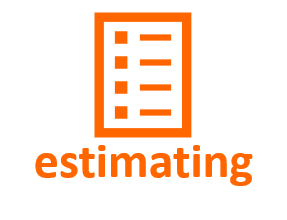The Addendum to the
Real Estate Agent's Contract
SAMPLE CONSTRUCTION CONTRACTS
This discussion is presented as a matter of business management. Any action on your part should be discussed with your legal counsel. Builder-Resources.com is not a legal advisor, and is not practicing law by discussing this business document. Please refer to the Builder-Resources.com site disclaimer.
We've all had it happen...
The speculative project that we have started has been going well. We have a nice little 20-lot development that we are building out, and have built and sold six houses. We have been putting the houses on the market after they are completed, and all six houses have been sold directly to the buyer.
We are currently working on the next three lots, when a real estate agent calls to say she has a client interested in one of the houses in progress. Would we be interested in pre-selling lot eight?
Of course we would, we say.
Great, says the real estate agent. There's just one thing...we'll be using the broker's standard contract... oh, and the client would like to upgrade the appliance package... and the countertops should be granite...and the client would like to see what it would cost to...
The speculative project over which we had all the control is about to become a semi-custom project.
The standard real estate contract
As I began building and selling speculative houses, I was very uncomfortable with the contracts that agents would bring to me.
The standard real estate contract that most real estate agents use is designed to protect their real estate broker. This shouldn't be any surprise, as any contract is designed to protect the contract writer and not the other parties.
However, I needed an understanding between my company and the BUYER. The sale is important, of course, but of equal importance is managing the relationship between my company and the buyer. The real estate agent is going to make the sale and then will be on to other sales. The Buyer and I will be working together until the house is completed and then at least a year after that.
I had to have some way to manage the expectations in that relationship. I use the Real Estate Contract Addendum.
The Real Estate Contract Addendum
This is very helpful; thank you! Your web site is invaluable.
Debra Klinger
DK Dwellings
The Client Real Estate Contract Addendum is a document that is attached to the standard Real Estate Purchase Agreement generated by the Realtor/Broker, and is referenced in that agreement. It contains the ADDITIONAL agreements between the Buyer and my company regarding the purchase of the house.
This agreement consists of the following four sub-documents:
- The Construction Agreement
- The Standard Specifications
- The Allowance Schedule
- The Builder Limited Warranty
The download below is in Word format so you can adapt it to your specific needs.
The Construction Agreement
In this sub-document, I want to establish the parameters of the relationship between the Buyer and my company.
Typically, the Realtor/Broker Real Estate Contract outlines the financial aspects of the purchase and then has several pages defining the roles and responsibilities of the Realtor/Broker as regards the transaction. The interest of the Realtor/Broker is in protecting their business, and the sales contract reflects that interest.
However, since the sale is of an unfinished house, it is important that the relationship between the Builder and the Buyer be defined as part this transaction. Everyone involved must understand and accept the levels of interaction and responsibilities of each party. If such interactions and responsibilities are not sufficiently defined, the Builder is leaving the construction company in a very vulnerable position.
The Buyer can claim, for example, that her understanding was that the changes she wanted to the kitchen counter materials were explained to the Builder prior to the contract, and she just assumed that they were included in the contract pricing.
Or the Buyer can refuse to allow any photographs of his house to be displayed on your website, or insist that one of the bedrooms be painted in the colors of his favorite pro football team, or anything else that is not delineated in this contract addendum.
Once you have agreed to sell a spec house before it is finished, you are, in many ways, building a custom house. Make sure you are protected.
The Standard Specifications
In this document, you are setting out the specifications you and your designer originally selected for the house, and upon which you set your budget for the house. You are pointing out to the Buyer that upgrades are available, but that such upgrades are OPTIONAL, and will result in an additional charge.
You also want to make it clear to the Buyer that replacing products already installed in the house will be subject to a removal charge, a clean-up charge, and a replacement charge in addition to the cost of the new materials or item.
The Allowance Schedule
There are several finish items for which you have not make specific selections but have included allowances in your original budgeting. Show those allowances here so the Buyer knows the upside amounts they can spend. If she wants a $5,000 entry door and your allowance is $1,000, the additional amount triggers a "Confirmation of Instructions" with a deposit requirement.
I haven't explained the importance of the deposit requirement, and such an explanation would be in order here.
It is not at all uncommon for a Buyer to fail to qualify for financing or to be unable to conclude the sale for any other of a thousand reasons. If you allow your Buyer to select products, such as a $5,000 entry door, that are in excess of your budget and in excess of your market, you must require a deposit that represents at least the difference between your budget and the selected product. In this case, the deposit would be $4,000, and it would be non-refundable (see the Construction Agreement, Paragraph 2, sections g) & h)).
You do not want to be in a position where a potential Buyer has added $30,000 in changes to your house and then walks away from it. Take it from my experience, the next buyer will not be willing to pay for those extras.
Requiring the deposit will also show you how serious the Buyer is about completing the transaction. If she balks at making the deposit, you have to question her commitment to the ultimate purchase.
The Builder Limited Warranty
This is the same warranty as you will offer on any of the houses you build. Be sure that you read through it and understand your obligations. Warranties are legal agreements having significant and long-term impacts on your business. Before you offer any warranty, have your legal counsel review the terms.
From a business operations standpoint, I have defined the warranty period starting at the receipt of the Certificate of Occupancy issued by the local building department. Even if the Buyer does not occupy the house until six months after completion, the warranty will have run for six months.
Be sure to list the exclusions and pass-through warranties and limitations.
Make the Buyer aware that he has certain obligations to keep the warranty in force.
Tell the Buyer how warranty work will be done. Believe it or not, I have heard of cases where the Buyer was making a warranty claim, but would not allow the Builder on the property to verify the claim or attempt to remedy the situation.
Closing Remarks
My main concern when we discuss Client Management is that you not get in a position where your business is at risk because something has blind-sided you. I am assuming that you will build ethically, that you are attempting to give your Buyers value for the money they are spending and the trust they have put in you. But even so, problems can and will crop up.
With a major purchase like a house, and several thousand decisions which must be made by the Builder, it is easy to have misunderstandings develop. Your show your professionalism in the way that you handle those misunderstandings. Any potential problems you can handle pro-actively make you appear more professional. The Real Estate Contract Addendum, an important part of the Client Management system, will help you do that.
And you will sleep better at night.
















